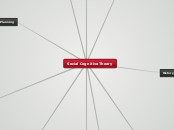realizată de cheyenne andrew 6 ani în urmă
171
Cheyenne's Mind map
In medical settings, ethnographic research has been instrumental for over fifty years. Despite its long history, there is a notable gap in studies focusing on socio-cultural processes within hospitals.









